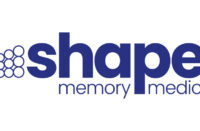BOTHELL, Wash.–(BUSINESS WIRE)–BTG plc (LSE: BTG), the global specialist healthcare company, today highlights the commencement of the KNOCOUT PE study. The KNOCOUT PE study will measure how hospitals and patients are benefitting from a new standard of care in the treatment of Pulmonary Embolism utilizing EKOS® therapy with faster, and even safer protocols, proven effective in the OPTALYSE PE study. Presented in May, the OPTALYSE PE study found pulmonary embolism (PE) can be treated effectively with EKOS® therapy over a much shorter period and at safer thrombolytic doses far below the previous standard.
“We are excited to launch a large international registry of EKOS use including the duration of ultrasound and the dose of thrombolytic, in submassive PE. KNOCOUT PE permits a review of how interventionalists are implementing the OPTALYSE PE protocols and the results they are finding in real world practice,” said BTG Vice President of Clinical Development Lynn Allen. “This importantly expands our clinical evidence to understand how clinical study findings such as these are adopted and what new best practices can be shared.”
At full enrollment, KNOCOUT PE is expected to include up to 100 centers internationally. Cases will include those from before and after the release of the OPTALYSE PE study.
“The results of the OPTALYSE PE trial suggest that a new standard for PE treatment might be adopted, the question is how are institutions adjusting to these new low dose, shorter duration treatments and what are they finding,” said KNOCOUT PE principal investigator Keith Sterling of Inova Alexandria Hospital, Alexandria, Virginia. “KNOCOUT PE accelerates the sharing and learning process and continues to build on the body of clinical evidence, including the ULTIMA and SEATTLE II studies.”
Physicians seeking to participate or to learn more should contact their local BTG sales representative.
About Pulmonary Embolism
Pulmonary Embolism (PE) is a condition that occurs when a piece of a blood clot breaks off from a clot in the legs and travels through the vasculature — getting trapped in the Pulmonary Arteries. When this happens the clot keeps blood from getting to some areas of the lungs to receive oxygen. This may lead to excessive strain on the right side of the heart, ultimately leading to heart failure and/or cardiovascular collapse. PEs can be immediately fatal, but if diagnosed and appropriate therapy started, mortality can be reduced from approximately 30 percent to less than 10 percent.
About the EkoSonic® Endovascular System
The EKOS® system uses ultrasonic waves in combination with clot-dissolving thrombolytic drugs to effectively dissolve clots and restore healthy heart function and blood flow.
In clinical studies, EKOS® therapy has been shown to speed time-to-clot dissolution, increase clot removal and enhance clinical improvement compared to either standard catheter-directed drug therapy or thrombectomy. EKOS® therapy requires significantly shorter treatment times and less thrombolytic compared to standard catheter-directed drug therapy, lowering the risk of bleeding and other complications.
About the OPTALYSE PE, ULTIMA and SEATTLE II studies
The OPTALYSE PE, ULTIMA and SEATTLE II studies were multi-center trials examining ultrasound-facilitated, catheter-directed thrombolysis using a low dose of a standard clot dissolving medication called tissue plasminogen activator (tPA) to treat both acute massive and submassive pulmonary embolism. ULTIMA, a randomized controlled study comparing EKOS®therapy to anticoagulation, looked at 59 patients across eight centers. SEATTLE II, a prospective single arm study, looked at 150 patients across 22 centers. OPTALYSE PE included 101 patients with acute proximal PE at 17 centers randomized to one of four treatment cohorts. The first cohort received 4mg of tPA per catheter over two hours. The second cohort received 4mg of tPA per catheter over four hours. The third cohort received 6mg of tPA per catheter over six hours. The fourth cohort received 12mg of tPA per catheter over six hours.
All cohorts saw a significant reduction in the main indicator of right heart strain from PE (measured as right ventricular to left ventricular diameter ratio (RV/LV)) by approximately 23 to 26 percent. The OPTALYSE PE results also showed a very low bleeding rate of three percent compared to 10 percent in the previous SEATTLE II study where patients were treated with 24mg for 12 or 24 hours.
About BTG
BTG is a global specialist healthcare company bringing to market innovative products in specialist areas of medicine to better serve doctors and their patients. We have a portfolio of Interventional Medicine products to advance the treatment of cancer, severe emphysema, severe blood clots and varicose veins, and Specialty Pharmaceuticals that help patients overexposed to certain medications or toxins. Inspired by patient and physician needs, BTG is investing to expand its portfolio to address some of today’s most complex healthcare challenges. To learn more about BTG, please visit: btgplc.com. NA-EKO-2017-0496
Contacts
BTG
Andy Burrows, VP Corporate & Investor Relations
+44 (0)20 7575 1741; Mobile: +44 (0)7990 530 605
or
Stuart Hunt, Investor Relations Manager
+44 (0)20 7575 1582; Mobile: +44 (0)7815 778 536
or
Chris Sampson, Corporate Communications Director
+44 (0)20 7575 1595; Mobile: +44 (0)7773 251 178
or
Greentarget Communications
Chris Gale, Vice President
+1-646-695-2883; Mobile: +1-203-570-4681






